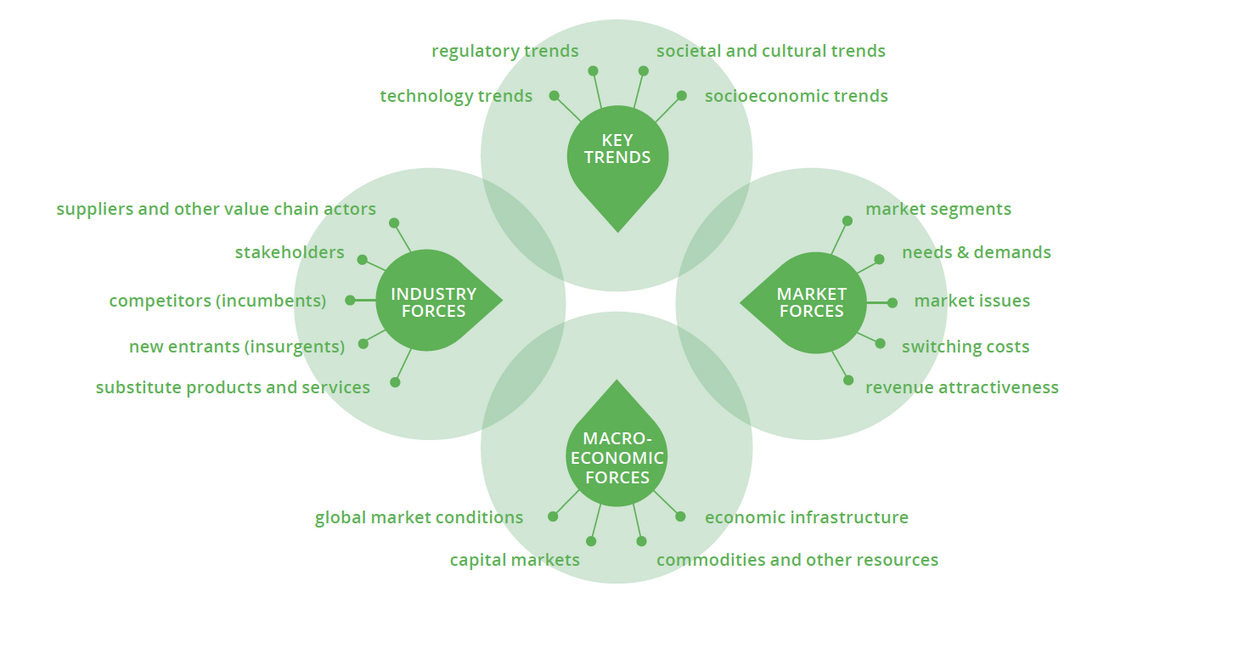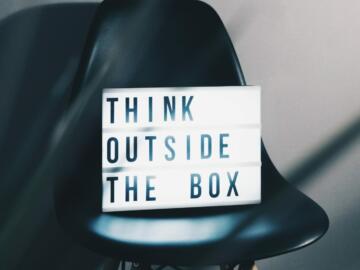Great opportunities and potential threats are rarely obvious from the beginning. And yet, failing to see early signs of change can make your company irrelevant in time. How can you make sure you identify those blind spots early on? And how can you install a culture of continuous vigilance?
Just like we have blind spots in our human vision, blind spots also arise in our thinking and in the assumptions we make. Say you decided to buy a red car last week. Chances are, while you’re on the road now, you’ll constantly notice red cars driving by. Our mind tricks us all the time, something that is perfectly illustrated in the Selective Attention Test from Simons and Chabris (1999).
Businesses have similar cognitive biases. Caught up in the day-to-day business, the attention of companies can be so selective that they fail to see early signs of change.
Disrupting change can be an opportunity to explore new markets or technologies; other times it will be a threat. But in both cases, failing to see developments that are in the periphery of your company vision can have serious consequences. The emergence of digital platforms is a great example. Retail businesses could have seen the growing e-commerce platforms as an opportunity or as a threat, but its impact on retail in the past decade is undeniable. Although e-commerce platforms kept on booming, cities continued to focus on the development of commercial space in large real estate projects. This resulted in unprecedented vacancy rates in their shopping streets.
How do you identify the blind spots?
Identifying the blind spots in your company vision requires you to look beyond your normal environment. At TomorrowLab, we use a variety of tools and models to gain insight into the elements that can impact your business.
One tool is the Business Model Environment. You can use this tool to help you map your business environment in a structured way. The Business Model Environment is organised into four areas: Market Forces, Key Trends, Industry Forces and Macro-Economic Trends. These areas surround the Business Model Canvas, because they influence the way you will design your business model. The Business Model Environment is a useful tool to raise awareness on environmental forces and to create a shared understanding across teams.

Another way to get more insight is to use the guiding questions developed by Professors George Day and Paul Schoemaker in their book Peripheral Vision: Detecting the Weak Signals that will Make or Break your Company. Peripheral vision enables you tobe more aware of your environment and to alert for what’s happening on the fringes of your organisation. In business, developing a peripheral vision has less to do with knowing the right answers than with posing the right questions to reveal the limits of our knowledge.
Let’s look a number of guiding questions that can help you to stimulate dialogue in your organisation. We used the mobility sector as an example to make the questions more concrete.
- What have our past blind spots been? What can we learn from the history of our organisation? E.g. What happened when horses were exchanged for cars as a mode of transport?
- Is there an instructive analogy from another industry? E.g. Digital platforms arose quickly in retail. It was a matter of time before they would be used to deliver mobility services.
- Who in our industry has a good track record of detecting change sooner and acting faster? What is their secret? E.g. What is Uber investing in? What strategic partnerships do they enter into?
- Which are the most important signals today that we rationalise away? E.g. Are we going to keep motivating to the Board why electric mobility will not take off?
- What can we learn from dissidents, defectors, critics and outliers? Is there a grain of truth in what they say? E.g. Will we finally speed up in providing real-time data, so our customers can plan their journeys better?
- Which surprises could hurt us? E.g. What if GDPR legislation would have to be implemented within 3 months?
- Which upcoming technologies are possible game changers? E.g. Will autonomous vehicle technology turn our organisation into a mere service provider? What if passenger drones will become a commodity?
Peripheral vision enables you to be more aware of your environment and to alert for what’s happening on the fringes of your organisation.
Dorothy Mingneau, TomorrowLabYour innovation’s secret weapon: the Early Warning System
Knowing where to look for signals is one thing. But how can you get this organised in your company? And how can you involve your employees in this?
If you want to identify blind spots in your company in a more systematic way, then you need to evolve from a strategy of passive scanning to active detection of weak signals. This task should not be exclusively assigned to your company’s management team. Instead, it’s an opportunity for your company to tap into the power of the combined knowledge and creative minds of your employees. Your employees are your radar of change.
At TomorrowLab, we recommend setting up an Early Warning System with your employees, a systematic process to detect and analyse weak signals and to provide insights for further developments.
An Early Warning System follows a three-step approach:
- Capture: Signal detected changes according to indicators you have agreed upon. Then consolidate those signals on a shared (online) platform.
- Analyse: Discuss and evaluate your signals. Assess their potential impact on your business and the speed they are coming at you.
- Act: Link your signals with actions. This can be doing more research or exploration, doing an improvement action, adjusting the strategy, starting a new strategic project, postponing, or even doing nothing.
Collecting and analysing weak signals is the key to anticipation and innovation. By organising them into an early warning system, these signals provide essential information for the strategic course of your business. The key to making an Early Warning System work is composing a diverse team. Various departments, regions, generations, and interests should be involved in the early detection of future change.
Want to identify your blind spots? Let’s talk.
Identifying the blind spots in your company vision will give you the opportunity to change your approach, adopt a new strategy, or experiment with something new. But spotting these early signs of change is not always easy. Involving an external partner like TomorrowLab in this exercise will increase your chances of success and avoid your company missing opportunities.
TomorrowLab can:
- Give an objective, outside-in view on your company environment.
- Provide insight in the driving forces of change.
- Be the critical voice that prevents tunnel vision.
- Offer a safe environment to experiment and try new things.
Need help along your innovation journey? Then get in touch with us.

Strategy stress testing
This Strategy Stress Testing program is an assessment of how your current strategy and business model perform under realistic but severe or unexpected market changes. Across different phases and through challenging questions, your business will be examined, the most critical future challenges will be identified, and pathways to address these challenges will be determined.

